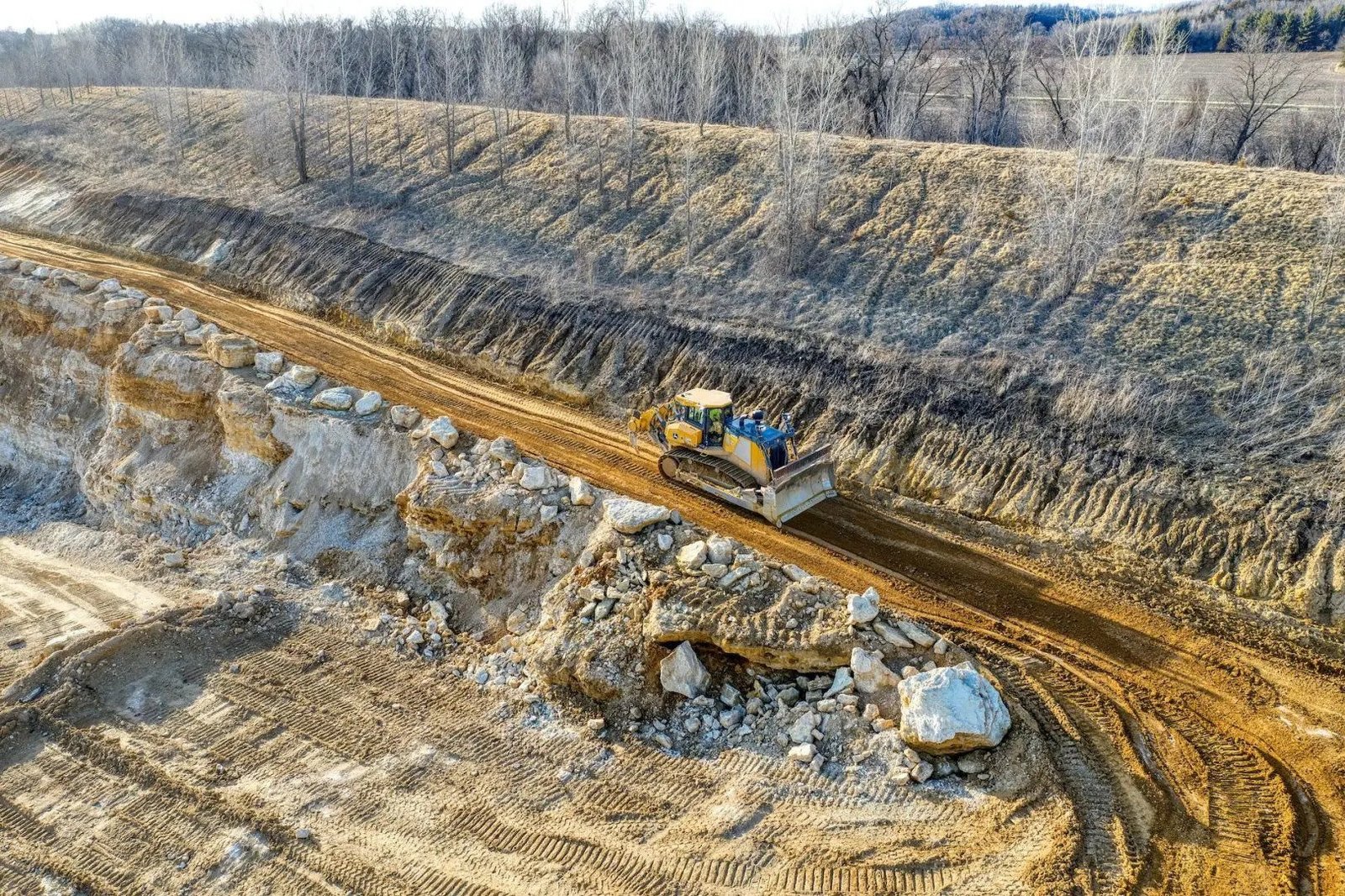What if we told you that the neglected and contaminated land could not only be restored but also offer remarkable tax advantages? Welcome to the world of land remediation tax relief – a valuable opportunity for property investors and property developers. This tax relief allows you to reclaim up to 150% of the costs incurred in cleaning and reclaiming the land.
This comprehensive guide will uncover the details of Land Remediation Relief, exploring its eligibility criteria, and how you can take advantage of this opportunity to enjoy tax benefits while contributing to a greener future.
Defining Land Remediation Relief
Land Remediation Tax Relief is a tax incentive scheme implemented by the UK government to promote the clean up and redevelopment of contaminated or derelict land. It applies specifically to corporation tax, offering one of the attractive tax reliefs that gives a tax deduction up to 1.5 times the money spent on cleaning up the contaminated site and building.
By reducing the tax liability associated with land remediation activities, this relief aims to stimulate economic growth, enhance environmental sustainability, and facilitate the transformation of areas into productive and safe spaces.
What Constitutes Land Contamination for Land Remediation Relief?
What constitutes ‘Contamination’ is generally a question that floats around while dealing with this relief. Land and buildings are deemed to be ‘Contaminated’ because of industrial activity which would cause relevant harm.
Relevant harm includes death or significant injury or damage to living organisms, water pollution, a significant adverse effect on the ecosystem, and structural or other significant damage to building or other property or interference that significantly compromises their use. This includes removal of contaminated soil and water, the treatment of harmful organisms, the removal of natural contaminants and from 1 April 2009, dealing with arsenic, arsenical compounds, and radon.
However, land cannot be contaminated because of the presence of living organisms or decaying matter deriving from them. The removal of burials or animals’ droppings does not qualify as ‘Contamination’.
Did You Know?
“If the contamination was caused by the claiming company, this relief will not be allowed. Read our case study article Land Remediation Relief(LRR).”
What constitutes ‘Land in a Derelict State’ for Land Remediation Relief?
‘Land in a derelict state’ refers to land that meets two specific criteria. Firstly, the land must not be in productive use, meaning it is not currently being utilised for any beneficial purpose.
Secondly, the land requires the removal of buildings or other structures to be put into productive use.
Conditions for Claiming Land Remediation Relief

To access enhanced deductions and tax advantages through Land Remediation Relief, businesses must meet the following eligibility criteria:
- Businesses must be subject to UK corporation tax. Individuals and partnerships are not eligible, except for companies within a partnership that can claim relief for their share of land remediation expenditure if requirements are met.
- The land must be in the UK and acquired by the company for its trade and business, specifically from a third party in a contaminated state. The company must own or have a major interest in the land.
- The land must be contaminated as per the definition above and the cost incurred would only be applicable for an additional deduction if this cost would not have been incurred if the land had not been contaminated.
- The acquisition cost must not be discounted due to contamination of the land. It has been suggested that where property is acquired at a reduced price because of contamination, any later expenditure on land remediation will be excluded.
- The company must conduct the qualifying land remediation activities either directly or through a contractor. Qualifying land remediation expenditure encompasses both revenue and capital expenditures.
Qualifying Land Remediation Expenditure
One of the key aspects of claiming land remediation relief is understanding and identifying the qualifying land remediation expenditure.
Qualifying land remediation expenditure refers to the expenses incurred by the company that meet certain conditions. These conditions are as follows:
- The expenditure is related to land that is either contaminated or in a derelict state.
- The expenditure would not have been incurred if the land was not contaminated or in a derelict state.
- The expenditure is on staffing costs, materials, land remediation contracted out to an unconnected person, or qualifying expenditure on connected sub-contracted land remediation.
- The expenditure is not subsidised.
- The expenditure is not incurred on landfill tax.
Qualifying land remediation expenditure encompasses both revenue expenditure and capital expenditure, provided that the company has chosen to deduct it when calculating profits.
To know more in detail about both revenue expenditure and capital expenditure, check our ‘Get Acquainted with Capital and Revenue Expenditure’ article.
Deduction for Capital Expenditure
Businesses can claim a deduction for capital expenditure incurred in relation to qualifying land remediation activities.
The relief allows the company to deduct the capital expenditure from its profits when calculating its taxable income for the period in which the expenditure was incurred. To benefit from this relief, the company is required to make an election under section 1147.
An election must adhere to the following requirements:
- The election should clearly state the specific accounting period for which it is being made.
- The election must be communicated in writing to an officer of Revenue and Customs.
- The election must be made within two years of the end of the accounting period to which it relates.
Note: If a company is about to start a UK property business or trade, any capital expenditure incurred for that business or trade is considered to have been incurred by the company on the first day it starts the business or trade, and in the process of doing so.
Capital Expenditure: Capital Gains Tax
It is important to note that this deduction cannot be claimed for qualifying capital expenditures when calculating chargeable gains or allowable capital losses.
In other words, the deduction for land remediation expenditure applies solely to the profits or losses of the trade or property business, and it does not extend to capital gains or capital losses.
Deduction for Employee Costs
Expenditure qualifies for the deduction if it relates to employee cost, direct materials, or subcontractors’ costs incurred on relevant land remediation undertaken by the company or on its behalf. The deduction for employee costs does not include any administrative or secretarial functions.
Where an employee spends only part of his time in dealing with land remediation, his remuneration, etc. qualifies for the deduction in accordance with the following table:
|
Proportion of time spent dealing with land remediation |
Proportion of remuneration, etc. qualifying for deduction |
|---|---|
|
20% or less |
Nil |
|
Between 20% and 80% |
The appropriate proportion |
|
80% or more |
100% |
Deduction for Subcontractors
Provided that the company and subcontractor are not related, the whole amount paid to the subcontractor will qualify for the deduction.
If company and the subcontractor are related, the payment would only qualify if the expenditure incurred by the subcontractor is not subsidies and capital in nature. The expenditure should have been considered in calculating the profit.
How Can a Company Claim Land Remediation Relief?
Land Remediation Relief must be claimed in a corporation tax return. LRR is not available for the expenditure on which the Capital allowance has been or may be made. In case of CGT, expenditure relating to LRR is not an allowable deduction.
A claim for land remediation tax credit must be made in the relevant tax return and can only be amended by amending the return. The company making the qualifying land remediation expenditure can get the relief by disclosing the same in the tax return. The claim must be made within the time limit which will be discussed further below.
Land Remediation Relief is available to companies engaged in both property investment and property development. The amount you can claim for land remediation tax relief depends on the nature of your involvement with the asset.
- Property Investors: 150% deduction
- Property Developers: 50% deduction
Moreover, even if your company is experiencing a loss, there’s still relief available. The company can surrender losses for a land remediation tax credit at 16%.
Timing of Land Remediation Relief
The timing of Land Remediation Relief differs for revenue and capital expenditure.
For qualifying revenue expenditure, a company can claim land remediation relief in the accounting period in which the expenditure is deducted from the profits in accordance with generally accepted accounting practice (GAAP), for instance, when the property is sold.

However, for capital expenditure, relief is obtained in the tax computation for the accounting period in which the expenditure was incurred. As mentioned above, the election must be made within two years of the accounting period to which it relates.
Illustration
A company purchases commercial property for redevelopment into a retail complex. It conducts environmental remediation on the site, addressing contamination from previous industrial activities. At the end of the first year, the company considers the expenditure as work in progress.
In the second year, after completing the retail complex and leasing out the units, the company deducts the land remediation expenditure from its profits. In this scenario, B Ltd is eligible to claim Land Remediation Relief in the second year.
Land Remediation Tax Credit
If a UK company makes a loss for an accounting period in which it incurs expenditure on remediating contaminated land, it may elect to receive payable credit from HMRC. The amount of tax credit which can be claimed is 16% of the qualifying land remediation loss surrendered which is a cash return of 24% of qualifying expenditure. The loss can be surrendered in total or in part, in return for a land remediation tax credit. Any losses not surrendered are carried forwarded and set off against profits of the same source in later accounting periods.
The company must submit a claim in the original return or in an amended return for the relevant accounting period. The claim must clearly specify the exact amount of the tax credit being claimed.
Time Limit for Claiming Land Remediation Tax Credit

The claim for the land remediation tax credit including amendment of the claim must be made within one year from the filing date of the relevant company tax return.
However, there is a possibility of making a claim, amendment, or withdrawal beyond this time limit if authorised by an Officer of Revenue and Customs.
Interaction with Capital Allowances
One of the most significant interactions of land remediation relief is with Capital Allowances. Capital allowances allow businesses to claim tax relief on qualifying capital expenditures, such as the purchase of plant and machinery.
A company is not permitted to make an election to consider capital expenditure as qualifying expenditure for Land Remediation Relief if it is eligible to claim under Capital Allowances Act 2001, such as Plant & Machinery Allowances, Industrial Buildings Allowances, Agricultural Buildings Allowances, Research & Development Allowances, etc. In such cases, the company cannot claim itself of Land Remediation Relief for the same expenditure.
How Can a Company Claim Land Remediation Relief?
Land Remediation Relief must be claimed in a corporation tax return. LRR is not available for the expenditure on which the Capital allowance has been or may be made. In case of CGT, expenditure relating to LRR is not an allowable deduction.
A claim for land remediation tax credit must be made in the relevant tax return and can only be amended by amending the return. The company making the qualifying land remediation expenditure can get the relief by disclosing the same in the tax return. The claim must be made within the time limit as discussed earlier.
Conclusion
Land Remediation Relief offers UK land remediation companies valuable tax incentives. Assessing eligibility, documenting qualifying expenditure, and following the claim process can help taxpayers offset costs and restore contaminated or derelict land.
Our expertise maximises eligible claims and ensures relief scheme compliance. Our expertise maximises eligible claims and ensures relief scheme compliance.
Ready to take the next step?
Our expert services in Land Remediation Relief are designed to help you maximize your financial advantage. Let us guide you through the process seamlessly.



